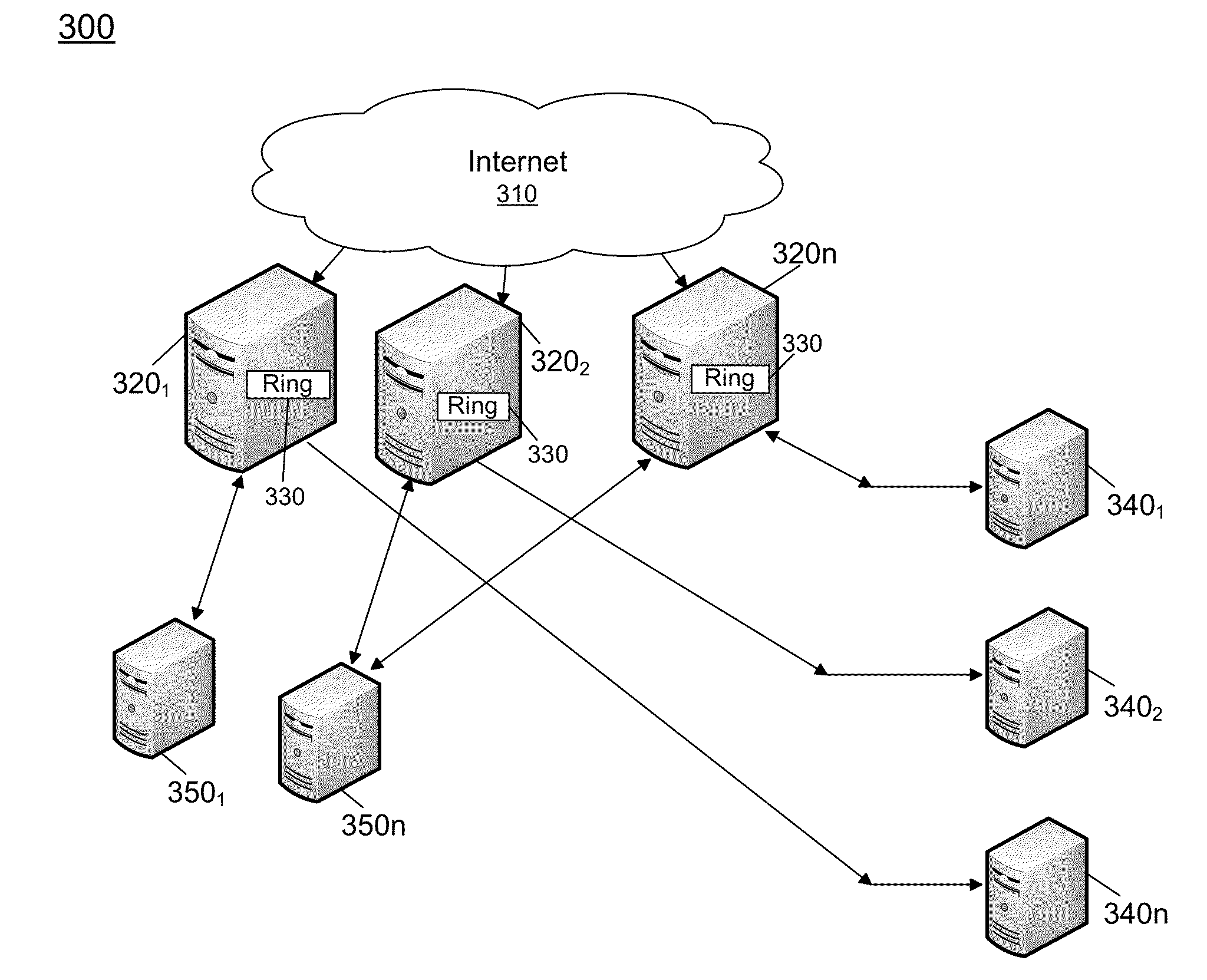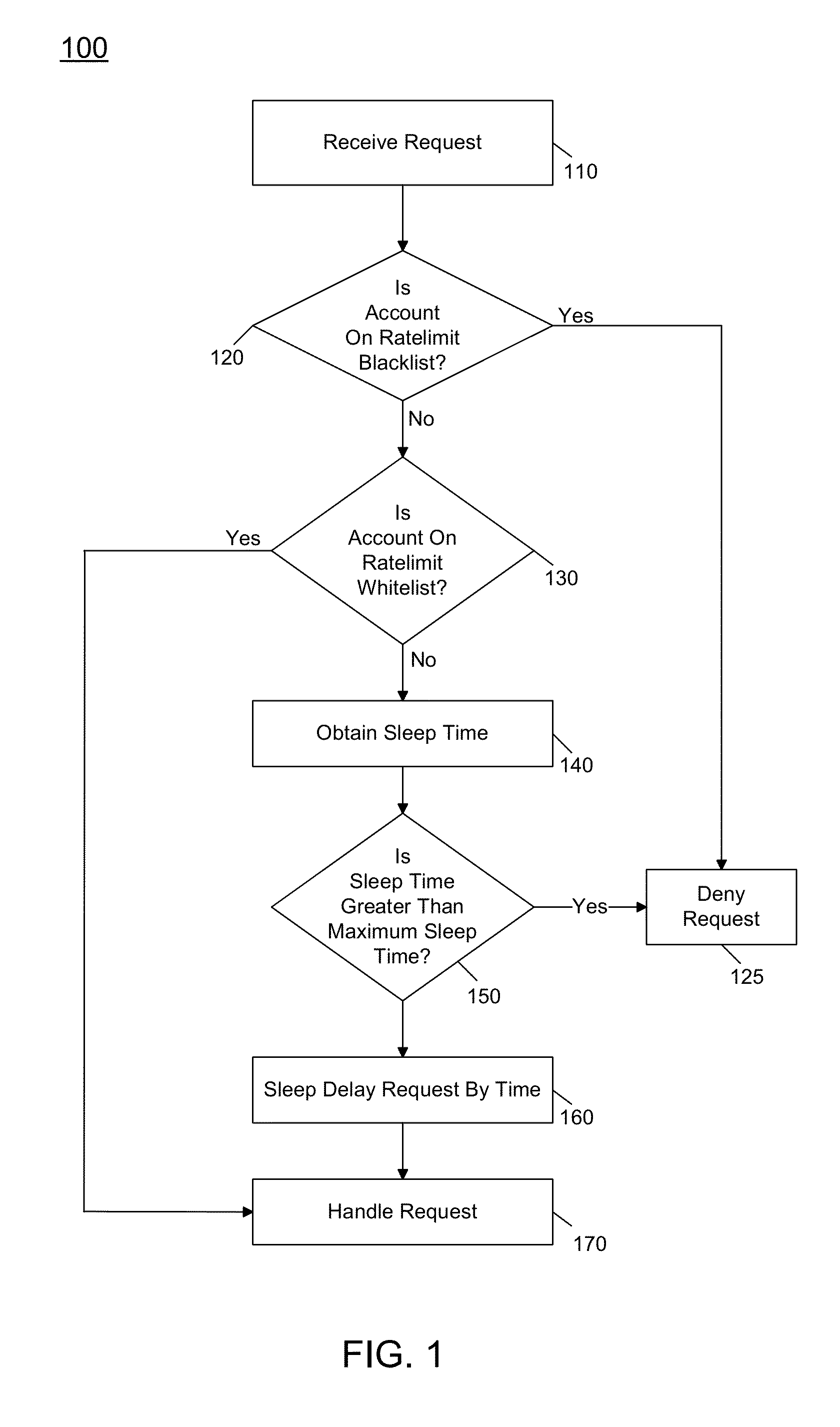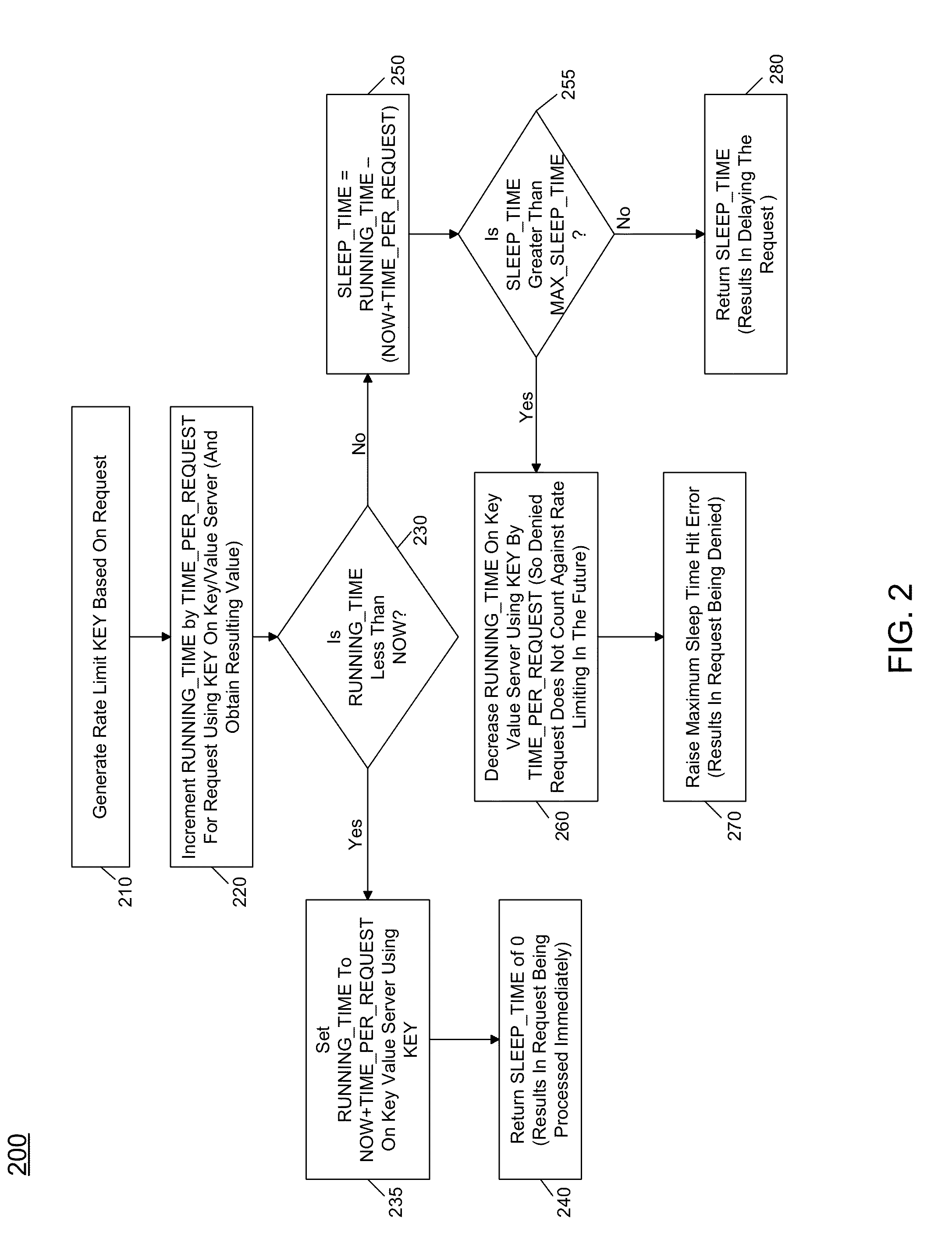Distributed Rate Limiting Of Handling Requests
- Summary
- Abstract
- Description
- Claims
- Application Information
AI Technical Summary
Benefits of technology
Problems solved by technology
Method used
Image
Examples
Embodiment Construction
[0009]To handle a large amount of incoming traffic to a data center environment or other large collection of servers or other computing devices, embodiments provide for a distributed rate limiting mechanism that can be applied to the incoming traffic, which in various embodiments can be web serving requests for a given http service or requests seeking access to the same resource such as from proxy servers to an object server, e.g., a put request to a database such as a container. By providing this rate limiting mechanism, incoming requests from clients can be slowed down in a manner that is generally not visible to the user, and can be done in a highly distributed fashion with minimal overhead. In general, the technique may be realized by determining whether an incoming request is subject to rate limiting, and if so determining whether the request should be rate limited. If it is determined that the request should be rate limited, it can be delayed, e.g., in a middleware component, ...
PUM
 Login to View More
Login to View More Abstract
Description
Claims
Application Information
 Login to View More
Login to View More - R&D
- Intellectual Property
- Life Sciences
- Materials
- Tech Scout
- Unparalleled Data Quality
- Higher Quality Content
- 60% Fewer Hallucinations
Browse by: Latest US Patents, China's latest patents, Technical Efficacy Thesaurus, Application Domain, Technology Topic, Popular Technical Reports.
© 2025 PatSnap. All rights reserved.Legal|Privacy policy|Modern Slavery Act Transparency Statement|Sitemap|About US| Contact US: help@patsnap.com



